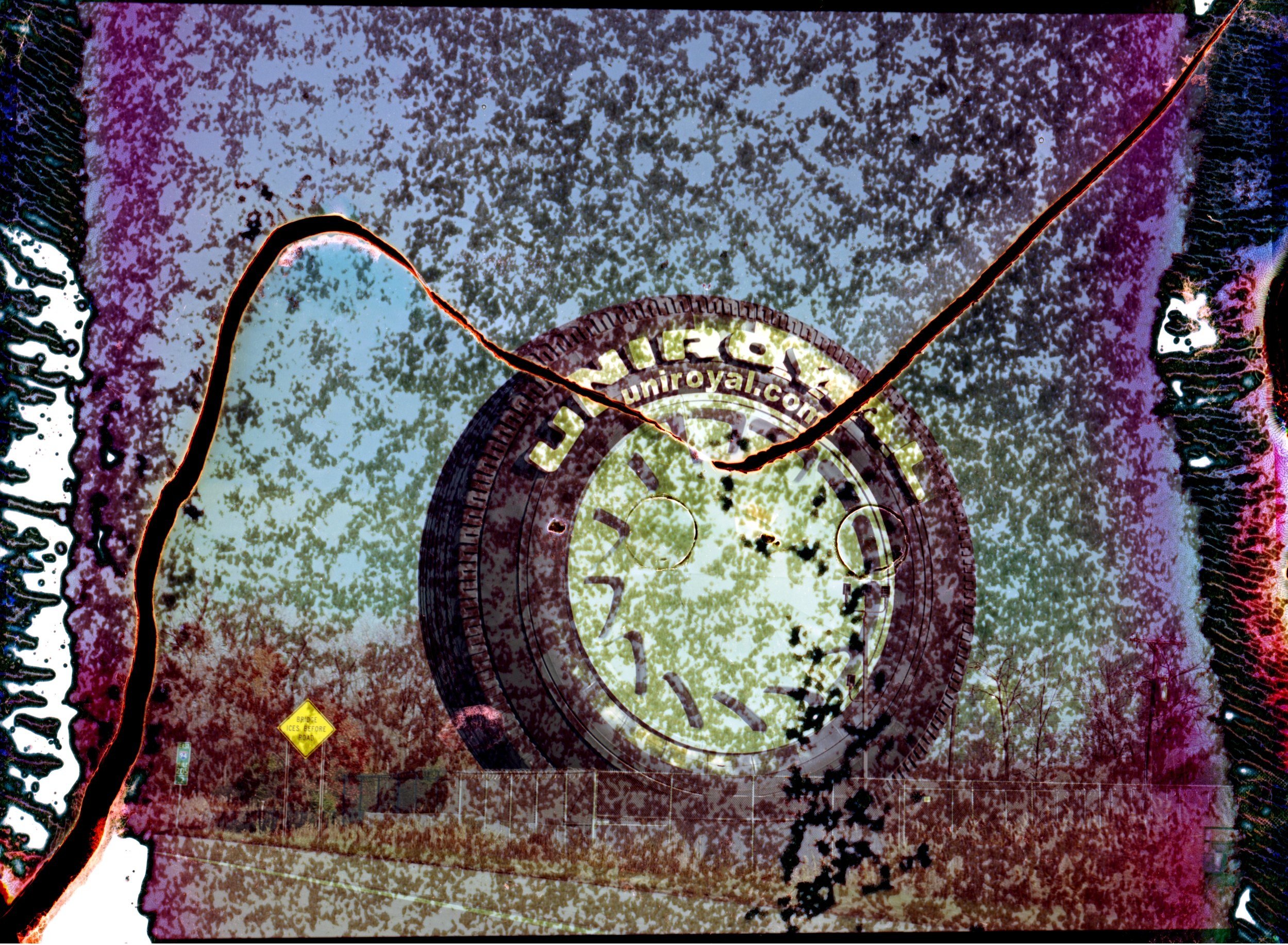
Film Soup
1. Shoot normally:
Shoot multiples of everything important, we’re playing with randomized effects here
2. Tape Film:
loosen the whole film spool a little first, to allow proper chemical access to the film. Any tape works
3. Pop off the film spool ends:
a butter knife works best for this, allows for the chemicals to access the inner frames
4. Boil the film ('“film soup”):
OUTSIDE! See mixture details below, can have a great deal of control to achieve desirable distressing results
5. Watch the “film soup”:
Add water, or any other liquid on hand when it starts getting low. You’ll probably have a really bad time if it boils over too.
6. Let film completely dry (optional):
Put film in uncooked rice for 48 hours. This can help with loading the film
7. Loading the film:
This is an entire process, definitely the most tedious part. Metal reels are slightly easier, wetting the film before loading might be easier for you.
8. Develop normally:
Add an extra wash step to start if you are worried, I never do and it turns out fine for me.
Making the Soup
To successfully distress all 20+ rolls I shot for the Almost Gone project, I just kept saving and adding to the same mixture. By the end I put all sorts of things in there - red wine, vodka, pasta sauce, spices, lemon and lime juice, salt, vinegar, used motor oil, citric acid, and plenty more I cant remember
The smell was awful, so it really had to be boiled outside on a grill. To be clear, you are really only controlling two variables with the film soup mixture - acidity and viscosity. The more acidic the more drastic a color shift on the film. The less viscous the soup is, the further it can get onto the negative.
How are these effects created?
The FUSED BACKER white space is created by boiling the film for over an hour, and letting it dry completely before developing. The backer permanently fuses to the negative, usually around the edges like this
The texture over the whole image is basic RETICULATION, which is degradation of the image from high temperature.
The COLOR SHIFT by the edges is the chemical impact of the film soup on the negative. Controlling level of acidity and viscosity of the soup, and the looseness of the film in the soup are the factors at play here.
Controlling the results
On an individual negative level, the distressing is completely random, requiring a lot of trial and error to get consistently interesting results. But on the macro scale we do have control over the images.
More time = all effects are greater. I was able to cleanly get all the backer off by unrolling the film and soaking in cold water for 10 mins before peeling off the backer. If only reticulation is desired, just boil in water instead of film soup. For no reticulation, I’d assume you can just soak in the film soup cold overnight! Possibilities are endless here truly.



